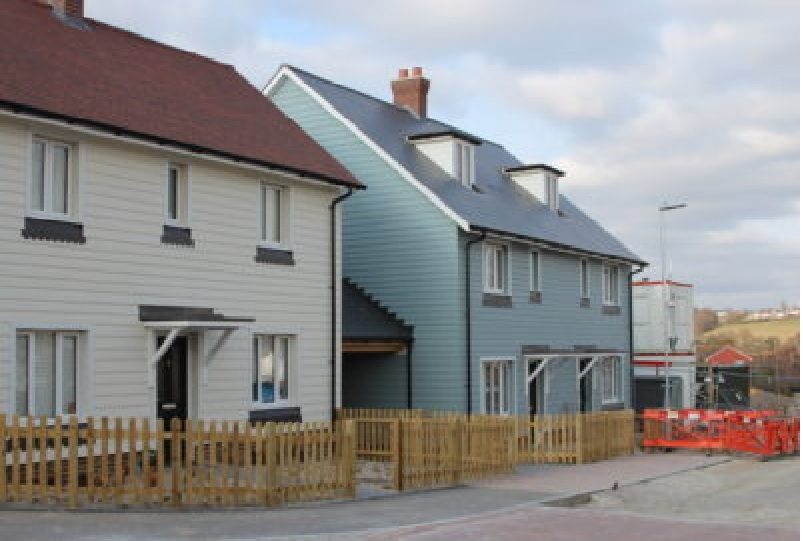Rye Town Council has decided not to change its policy on who can be allowed to buy new homes. The town’s current policy is part of the draft Neighbourhood Plan.
But this policy may have to be changed if circumstances change. A major change, for example, would be a fast Marsh rail link to London, without changes at Ashford, encouraging more commuters.
However a different policy, the so-called St Ives’ option, would not affect commuters.
In the meantime though, with the current policy, any new housing in Rye (such as the Lower School site proposal for 72 homes) could be bought as second homes or holiday lets.
Rye’s last major development was Valley Park (pictured above) which was recently completed – and includes a proportion of social housing.
The town’s Planning Committee therefore asked the Neighbourhood Plan’s Steering Group to re-examine the policy and Vice-Chair Anthony Kimber swiftly produced a detailed seven-page document.
The choices proposed were either to stay with the current policy,which would include government requirements related to social housing, or to take up the St Ives option which would limit buyers of new homes to those purchasing their principal residence.
However in St Ives’ case around a quarter of homes are already owned by non-residents, and are holiday lets or second homes. For Rye that figure is only about 8% , but this may not include bed and breakfasts and short term lets of homes – or parts of them.

Changing to the St Ives’ approach, says the report, “may involve challenges such as definition, enforcement and potentially costs”.
If Rye’s Neighbourhood Plan was agreed in a referendum, Rother District Council could argue that it was the town’s responsibility to enforce a requirement that applied only to Rye.
However this is a problem that will not go away as the report quotes from a local estate agent’s website: “The holiday home market is strong in Rye and the surrounding villages with approximately 20% of sales being bought for second homes and holiday lets”.
However the same site goes on to say: “A new and growing group are people who, since the advent of faxes, email and broadband, are able to work from home and want to move their families out of the city to what they rightly see as a better environment.”
If high-speed trains were to be extended from Ashford to Rye and beyond, that suggests this “commuter market” could grow considerably – and they would probably all be “principal residences” so the St Ives’ option would be irrelevant.
Photos : Rye News Library
Image Credits: J. Minter .




With business rates on the up,surely to keep these down for our hard working shop keepers and others, Rother district council should double the rates,on these absent home owners, who generate very little to this town.
What evidence does Mr Tolhurst have to back up his claim that ‘absent homeowners generate very little to this town’? This statement is bandied about constantly but one has seen little hard evidence, in relation to Rye, to support it.